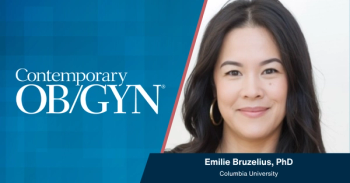
Language barriers linked to delays in breast cancer surgery
Patients with non-English language preference face significant delays in definitive breast cancer surgery, according to new research.
Definitive surgical management for breast cancer is significantly delayed among patients without English as their preferred language, according to a recent study published in JAMA Network Open.1
Barriers to screening
Factors linked to a patient’s ability to access breast cancer screening and treatment include race and ethnicity, immigration status, health literacy, and other social determinants of health.2 Treatment for breast cancer often involves multifaceted interactions with the health care system, highlighting a potential impact of language barriers.1
“Such barriers to care for minoritized and underserved populations are increasingly recognized, but the impact of non–English language preference (NELP) on cancer outcomes remains underexplored,” wrote investigators.
Evaluating language preferences
The retrospective analysis was conducted to evaluate differences in breast cancer care related to NELP. Patients receiving breast cancer treatment at a single academic medical center between January 1, 2000, and December 31, 2021, were included in the analysis.
Demographic data was self-reported by participants, including race and ethnicity, which were reported as covariates. During the initial hospital registration call, patients were asked about their preferred language. Those reporting a preference for using a language other than English during visits were recorded as having NELP.
Participants also reported whether they preferred to have an interpreter during medical visits. Those expressing this preference were joined by an interpreter during the registration call.
Survival outcomes
The prevalence of disease-specific survival (DSS) was reported as the primary outcome of the analysis, while rates of disease-free survival (DFS) and overall survival (OS) were reported as secondary outcomes. Investigators recorded DSS as the time between the date of diagnosis and the date of breast cancer-related mortality or final follow-up appointment.
The time between the date of diagnosis and recurrence or death was used to record DFS, while the date until last follow-up or death defined OS. Disease presence after definitive treatment indicated recurrence.
Participant demographics and language preferences
There were 2261 participants aged a mean of 59.6 years included in the final analysis. Of participants, 11.2% were Black, 0.04% American Indian or Alaskan Native, 9.3% Asian, 71.3% White, 8.2% other race, and 4.9% Hispanic.
The English language preference (ELP) group included 2023 patients, and the NELP group 238. In the NELP group, 42.4%, 20.2%, 10.5%, 4.2%, and 22.7% preferred Mandarin or Cantonese Chinese, Spanish, Russian, Portuguese, and other languages, respectively.
Survival rates
Across a median follow-up period of 60 months, the NELP group reported a 5-year DSS rate of 98.5%, vs 99% in the ELP group. This indicated an adjusted hazard ratio (HR) of 0.79. These groups also had 5-year DFS rates of 93.9% and 95.6%, respectively, indicating an HR of 0.85.
For OS, the NELP group had a 5-year rate of 94.4%, vs 96.7% in the ELP group, indicating an adjusted HR of 0.96. Similar survival outcomes were reported when excluding Mandarin- and Cantonese-speaking patients in the NELP group.
Delayed surgery in patients with NELP
NELP patients also had a significantly increased duration between biopsy and definitive surgery, with a median of 49 days. In comparison, the median period was 38 days in the ELP group. This duration was increased to a median of 54 days among NELP patients with Medicaid insurance, vs 36 days in ELP patients with Medicaid insurance.
These results indicated no significant variations in breast cancer survival outcomes among NELP patients vs ELP patients. However, NELP was linked to delays in treatment.
“Comprehensive, culturally sensitive strategies are needed to address these disparities and ensure all patients receive optimal cancer care, regardless of language preference,” concluded investigators.
References
- Spiegel DY, Levey J, Modest A, et al. Non–English language preference and breast cancer outcomes. JAMA Netw Open. 2025;8(6):e2514036. doi:10.1001/jamanetworkopen.2025.14036
- Emerson MA, Golightly YM, Aiello AE, et al. Breast cancer treatment delays by socioeconomic and health care access latent classes in Black and White women.Cancer. 2020;126(22):4957-4966. doi:10.1002/cncr.33121
Newsletter
Get the latest clinical updates, case studies, and expert commentary in obstetric and gynecologic care. Sign up now to stay informed.
















